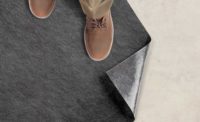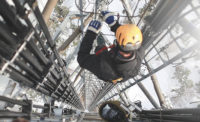How to maintain & repair walking-working surfaces
Plan each step

Few employees may ever take notice of a freshly cleaned, well-maintained floor. Unfortunately, too few also tend to notice uneven surfaces that cause trips or spilled materials that can make floors slippery. That’s one of the reasons why it’s up to employers to make sure that these types of hazards are eliminated.
Plans
Formal, written floors safety plans are not specifically required under the OSHA standard. Plans are, however, a way to show compliance with the requirements to inspect and maintain walking-working surfaces [29 CFR 1910.22(d)]. In some facilities, they are a stand-alone plan. In others, they are sometimes combined with, or incorporated into existing good housekeeping or sanitation plans.
Knowing the types of walking surfaces that are in the facility and who cleans each area is important because each is likely to have different cleaning, inspection and maintenance needs. For example, employees in production areas may sweep and mop those floors each shift, whereas the buildings and grounds crew may be responsible for snow removal in winter months.
Inspection schedules
Inspection frequencies are not specified in the OSHA standard. It simply says that inspections should occur “regularly” and “as necessary” [29 CFR 1910.22(d)(1)]. Frequencies will vary depending upon the amount of activity that happens in an area as well as the type of floor surface.
For example, a carpeted conference room that is only used once or twice a week is not likely to need hourly or perhaps even daily inspections. A busy employee cafeteria with tile flooring may need to be inspected before and after breaks and lunches, or at least daily.
Seasonal weather conditions may also affect the frequency of inspections. In dry seasons, entrances and hallways may not require much attention; but in rainy or winter months, they may require hourly attention – especially when employees are starting or ending their shifts.
Routine maintenance
Even the safest, most expensive flooring product that can quickly become unsafe if it is not properly maintained. Just as each area of a building may have a different use and inspection schedule, each area may also have different routine maintenance needs.
Develop a floor cleaning and maintenance schedule that is specific to each type of flooring in the building, its age and its typical use. In small office areas, the hallways may only need to be mopped once or twice a week. In breakrooms, the floors may need to be mopped each shift.
If the floor coverings are different in each area, different cleaning chemicals or cleaning methods may need to be used in each area.
Correcting hazardous conditions
Spilled materials, uneven surfaces, ice and worn-out entrance mats that buckle or have corners that flip over are all examples of hazardous conditions that can exist on walking-working surfaces. These and any others that are found must be corrected or repaired “before an employee uses the walking-working surface again” [29 CFR 1910.22(d)(2)].
When repairs or corrections can’t be made immediately, the area must be guarded to prevent employees from walking on it. Physical barricades such as caution tape, traffic cones, stations or other similar items can be used to help prevent access to an unsafe surface.
Slips, trips and falls to the same level continue to be the second leading cause of lost worktime injuries. Developing a floor safety plan and incorporating routine inspections, maintenance and fast repairs into the facility’s operating procedures will reduce their likelihood.
Looking for a reprint of this article?
From high-res PDFs to custom plaques, order your copy today!





